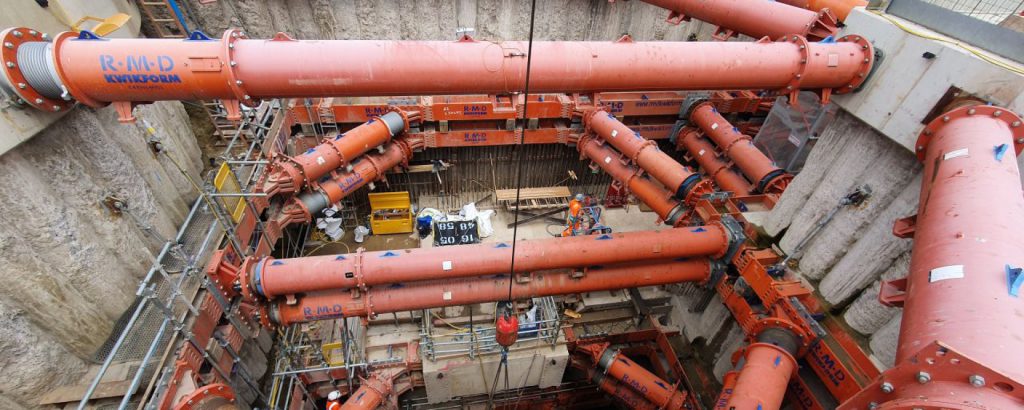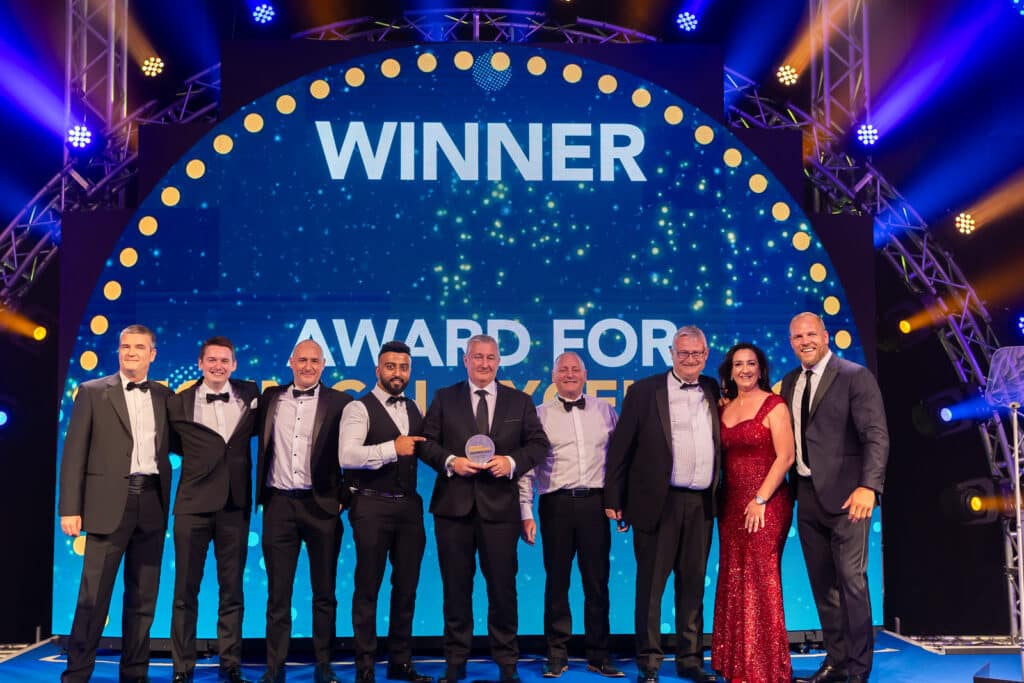Got a question? Get in touch to speak to one of our specialists
Demand for underground space is greater than ever before with basements on new developments going to greater depths and transport infrastructure and utilities being increasingly placed in tunnels. Construction of these record-breaking excavations is challenging the construction industry but while the underground trend is the world over, how do the methods of construction compare?
The techniques of forming retaining structures – sheet piles, diaphragm walls and secant or contiguous piled walls – appear to be similar globally, however, the approach to temporary support for bottom up excavation is not. While the design for top down excavations is comparable the use of temporary support is more driven by local practice and market forces.
“Bottom up sometimes has programme advantages for fit out and, while top down avoids temporary works, it has disadvantages for excavation as smaller equipment slows it down,” explains Arup director Dinesh Patel.
“Top down also has less ground movement risk but the bottom up approach means that the risk is over a shorter period. Bottom up pushes the boundaries of wall and prop design to get the building out of the ground quickly. There are believers in both approaches.”
The high ambient temperatures in the Middle East have a big impact on both structural steel and proprietary props. Designers will specify props with the smallest area of structural steel to minimise the thermal effect while maintaining the excavation, however, with the current standard sizes of proprietary props it is not yet so easy to remove the impact of temperature.
John Breen, Altrad RMD Kwikform Commercial Director
Ground conditions and urban context
When it comes to the bottom up approach, choice of propping is very much dependent on ground conditions and the urban context says Patel. “You have to consider whether it is next to modern buildings or older more sensitive structures,” says Patel.
“In the UK we have a lot of challenges with deep excavation next to historic and old buildings. In Hong Kong, buildings are often new or up to 20 years old so there are less issues.
“It is easier in less urban areas of the UK. In these locations sheet pile walls can provide support but in an urban setting diaphragm walls or contiguous piled walls are needed.”
Patel believes that UK practice is driven more by location that culture.
“For bottom up projects, use of hired proprietary propping is now commonplace and use of structural steel is declining unless it is linked to a façade retention scheme or there is a long programme that make hire less attractive,” says Patel. He adds that use of ground anchors for deep excavations in the UK is very rare due to ground ownership issues with excavations extending right up to site boundaries.
In mainland Europe, structural steel is still the go-to solution but hired proprietary props are now more likely to be considered during planning than in the past.
Hong Kong and Singapore
The approach in Hong Kong and Singapore is less driven by culture and more heavily guided by building control, although location also has an influence on practice in Hong Kong too.
“When I first came to Hong Kong in 1975 there was very little regulation but now there is a heavy regime of control. This regime exists mostly for public works but it is starting to extend to corporate projects too,” says Aecom fellow John Endicott.
“The level of checking is also increasing, as well as the focus on the independence of the checking. The trend in Singapore is very similar.”
For Singapore, the collapse of the Nicoll Highway in 2004 was pivotal in a shift to building control and in Hong Kong a number of high profile slope failures shaped the current approach.
“The choice of bottom up with temporary propping or top down with permanent works support depends on the type of contract and the client,” explains Endicott.
“In Hong Kong, most MTR stations are built using bottom up techniques due to historical use of a client prepared engineered design and the contractor undertaking only construction. These stations are very straightforward to design. Top down has not generally been popular in Hong Kong partly due to pragmatism as bottom up is easier to check. Projects built from top down are usually led by the contractor.”
Proprietary propping solutions have not caught on in either Hong Kong or Singapore and Endicott believes that there are a number of factors influencing this rather than simply resistance to an alternative method.
“Structural steel that is cut to length, stressed and bolted in place is common and has become more competitively priced,” explains Endocott.
“It is similar in Singapore but there it has been possible to hire H-section strutting with end plates for the last decade.”
Lack of space
One of the barriers to use of alternatives in Hong Kong is the lack of space for laying down proprietary props. “A contractor would need to have a yard and many of these are located in mainland China rather than in Hong Kong, so the cost of transport becomes inhibitive,” says Endicott.
“The market in Hong Kong is also priced on buying steel with it cut and sold as scrap at the end of the project. The sector does hire equipment such as cranes and concrete pumps but the hire of propping equipment – struts or proprietary systems – is uncommon.”
Endicott believes that Singapore could be interested in such systems but currently no one has enough equipment in the market to make it viable for the larger schemes so it has yet to influence local practice.
“The standardisation of MTR station design in Singapore gave rise to the opportunity for the steel hire business,” he explains. “The volume of projects meant that there was a market and it created certainty on costs.”
The usual benefits of being able to use larger excavation equipment with the wider prop spacing offered by proprietary also does not suit the local market in Hong Kong. According to Endicott, the industry is geared up for smaller excavation space with compact equipment.
Middle East
In the Middle East, it is culture that seems to influence the decision over ground support. “You frequently see consultants and contractors bringing the practices from their home countries to the projects they are delivering in the Middle East,” says Altrad RMD Kwikform Commercial Director John Breen. “Convincing more project teams to use proprietary props is more like trying to change a culture than supply a demand in the way we do in other regions.
“There are some fantastic structures being built in the Middle East but the practices used are not always as cutting edge as in other areas of the world.”
Developments in the Middle East also have two major advantages over those in Europe and Asia – space and cheaper labour. Frequently ground anchors are used to allow an open excavation along with manpower to fast track construction work to meet the programme demands that are common with clients in that region.
“The other big factor is temperature,” adds Breen. “The high ambient temperatures in the Middle East have a big impact on both structural steel and proprietary props. Designers will specify props with the smallest area of structural steel to minimise the thermal effect while maintaining the excavation, however, with the current standard sizes of proprietary props it is not yet so easy to remove the impact of temperature.”
It is clear there is not one size fits all solution when you are looking at the issue of deep excavation support on a regional basis or project by project. However, gaining understanding of the dynamics and best practice in other markets can provide insight that could be key to developing innovative approaches to drive safety, efficiency and cost saving improvements wherever you’re working.

